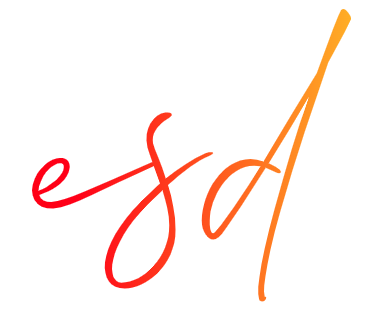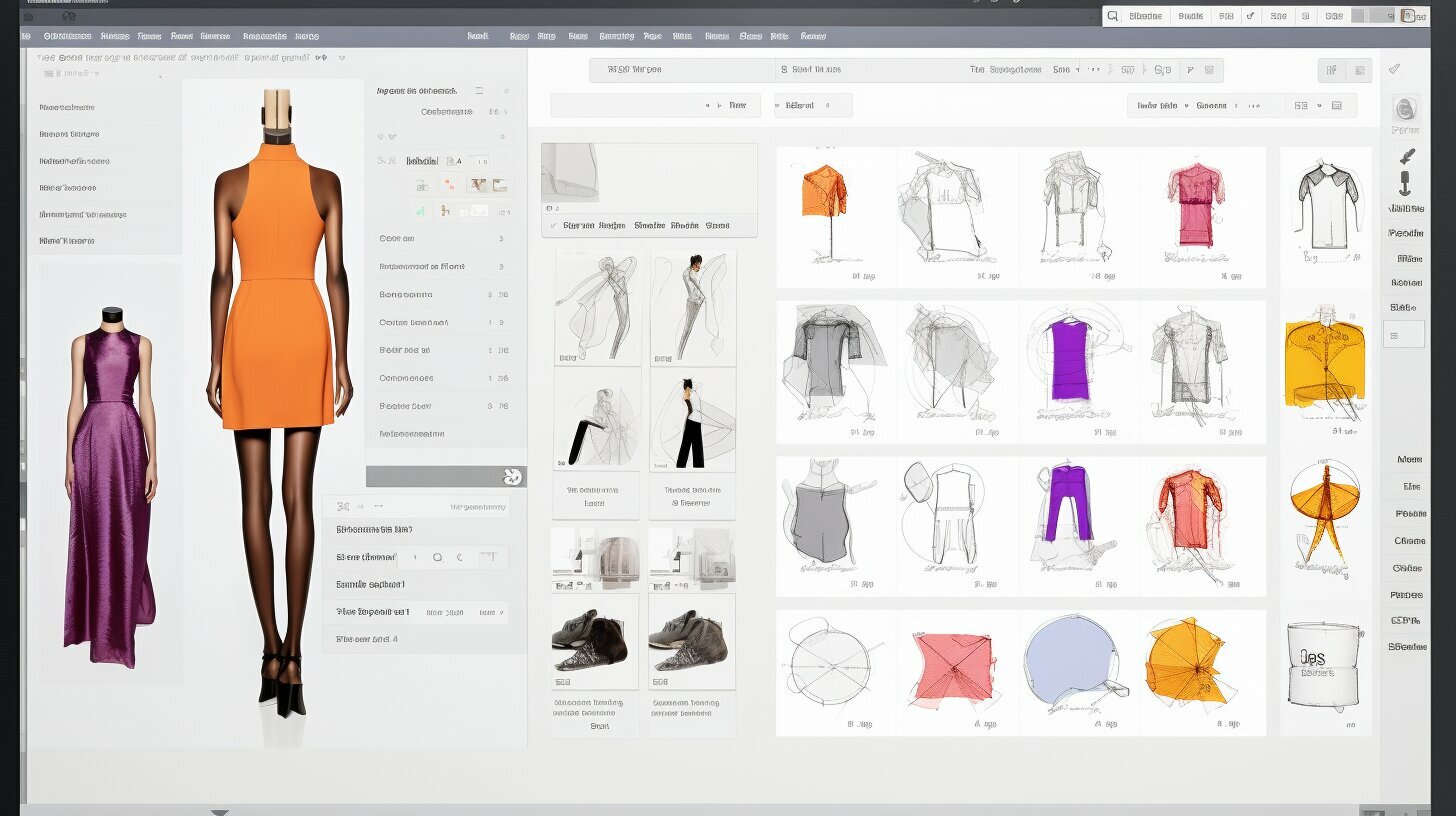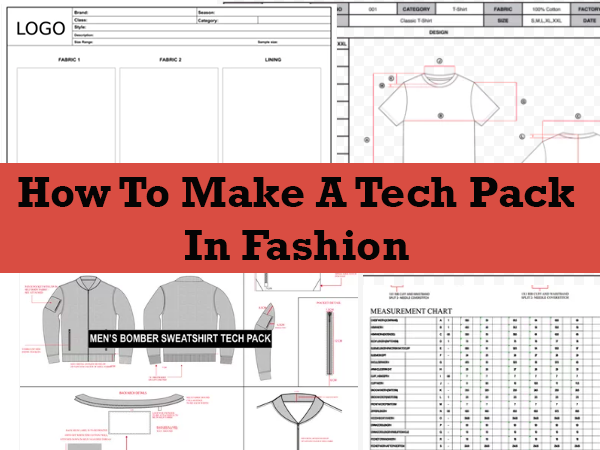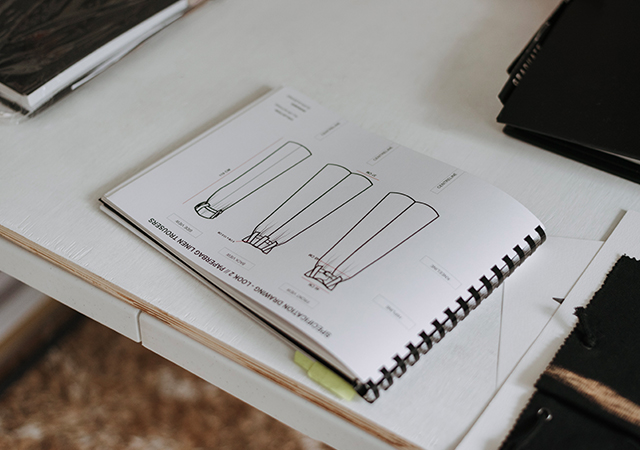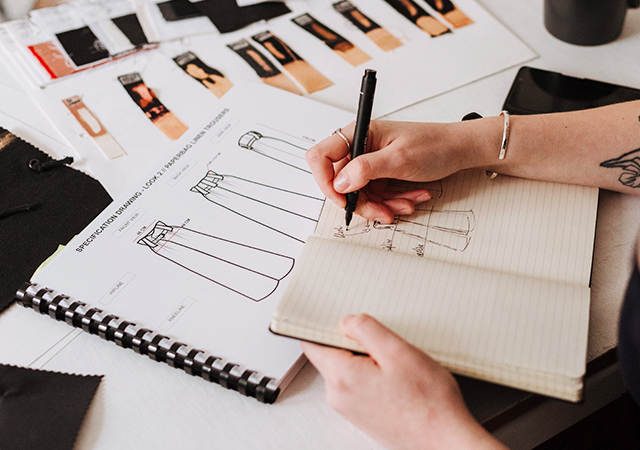Easy Guide on How to Make a Tech Pack Successfully
If you’re in the fashion industry, you’ve probably heard of a tech pack – the blueprint of a garment that includes every detail necessary for its production. Creating a tech pack can be a daunting task, but it’s essential for effective communication and product development. Whether you’re a newcomer or an experienced fashion designer, understanding how to make a tech pack is crucial.
In this guide, we’ll walk you through each step of creating a tech pack. You’ll learn the key components of a tech pack, how to work with a freelance fashion designer to create one, and how to communicate it with manufacturers. By following our tips and advice, you’ll be able to create a tech pack that accurately communicates your vision and helps you avoid potential issues during production.
What is a Tech Pack and Why is it Important in the Fashion Industry?
In the fashion industry, a tech pack is a crucial element of the product development process for creating apparel. It is a document that contains detailed design details and information about a garment, including garment construction specifications, materials, and trims.
A tech pack serves as a blueprint for manufacturers, providing clear and concise instructions for producing the desired garment. It is an essential tool that promotes effective communication between designers, technical designers, and manufacturers.
Without a tech pack, there is a risk of miscommunication and errors in production. Creating a tech pack ensures that everyone involved in the production process has the same understanding of the garment’s design and construction, resulting in a final product that meets the designer’s vision.
Overall, a tech pack is a critical tool in the fashion industry that helps streamline the product development process and ensures that apparel is produced to the desired quality and design standards.
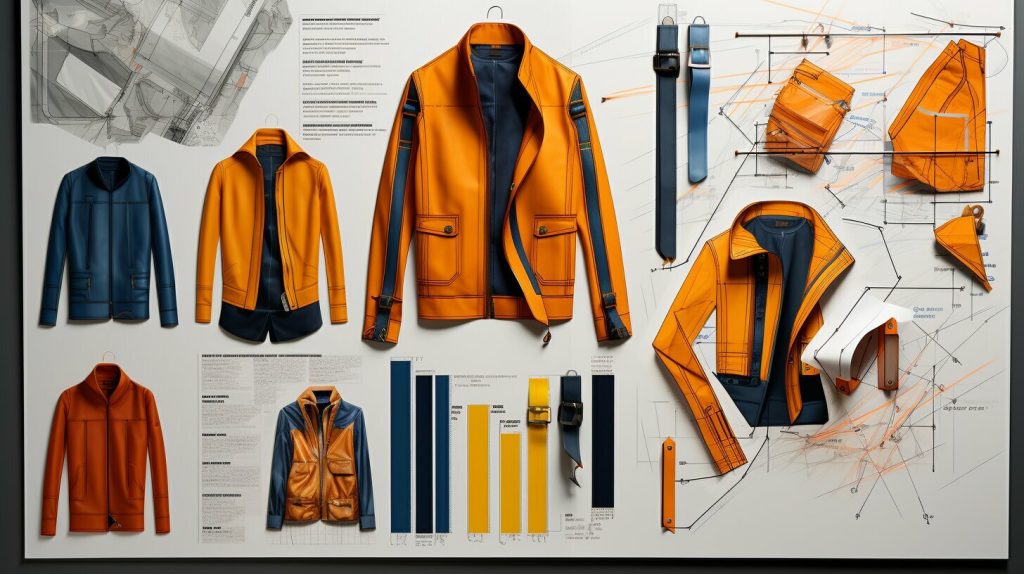
The Key Components of a Tech Pack
When creating a tech pack, there are several key components that must be included to ensure accurate communication of design details and specifications to manufacturers.
GARMENT SPECIFICATIONS
Garment specifications are the measurements and details that define the garment’s size, fit, and construction. These specifications should include detailed information on the fabric type, weight, and composition, as well as the stitching and seam details. It is important to make sure these specifications are precise to avoid any confusion or errors during the production process.
FLAT SKETCH or TECHNICAL DRAWING
A flat sketch or technical drawing is a visual representation of the garment design. It should accurately show all design details, such as pocket placement, collar style, and seam lines. This drawing serves as a guide for manufacturers to create a physical pattern and sample. Be sure to include any necessary callouts or notes to highlight specific design elements.
BILL OF MATERIALS (BOM)
The bill of materials (BOM) is a complete list of all materials and trims required for the garment’s production. This includes the fabric type, color, and quantity, as well as any buttons, zippers, or other trim details. Providing an accurate BOM is essential to ensure the final product meets design and quality standards.
TRIM DETAILS
Trim details include any additional components that are not part of the main fabric, such as buttons, zippers, or labels. These details should be included in the BOM and clearly labeled in the flat sketch or technical drawing.
By including these key components – garment specifications, flat sketch or technical drawing, BOM, and trim details – in your tech pack, you can ensure effective communication with manufacturers and a successful product development process.
Collaborating with a Freelance Fashion Designer to Create Your Tech Pack
If you’re not confident in creating a tech pack on your own, collaborating with a freelance fashion designer can be a great option. Not only do they have the technical expertise, but they also have experience in product development and fashion design. A freelance fashion designer can help you create a tech pack that accurately reflects your vision and ensures a smooth product development process.

Remember, your tech pack will serve as a guide for the entire product development process, so it’s important to work with a professional who can help ensure accuracy and attention to detail. By collaborating with a freelance fashion designer, you can confidently create a tech pack that will bring your design to life.
Understanding the Technical Drawing and Flat Sketch in a Tech Pack
When it comes to creating a tech pack, two crucial components that you need to include are the technical drawing and the flat sketch. These visual representations provide a clear understanding of the design details and help communicate the desired aesthetic and construction of the garment.
The technical drawing is a detailed and accurate illustration of the garment dimensions, seam placements, and other construction details. It should be created using computer-aided design (CAD) software to ensure precision and accuracy. A well-executed technical drawing ensures that all parties involved in the production process have a clear understanding of the garment’s construction.
The flat sketch, on the other hand, is a simplified and stylized drawing of the garment that highlights its design details and features. It is typically hand-drawn and shows the front, back, and sides of the garment. The flat sketch is a useful tool in the product development process as it allows designers and buyers to see how the garment will look before it is produced.
Creating accurate technical drawings and flat sketches requires an understanding of garment construction and design principles. If you lack the necessary skills, it may be beneficial to work with a freelance fashion designer or a technical designer to create these components for your tech pack.
Creating a Detailed Bill of Materials (BOM) for Your Tech Pack
One of the most critical components of your tech pack is the bill of materials, commonly referred to as the BOM. A BOM is a comprehensive list of all the materials, fabrics, trims, and notions required to create your garment. It’s imperative to have an accurate and detailed BOM to ensure that the manufacturer can source and purchase all the necessary materials and components with ease.
Creating a detailed BOM requires meticulous attention to detail and organization. Start by reviewing your tech pack and identifying all the individual components required to construct the garment. List each item separately and include all the necessary specifications, including fabric composition, weight, and construction, as well as trim details.
| Component | Material | Color | Trim | Qty |
|---|---|---|---|---|
| Front body | 100% Cotton | White | N/A | 1 piece |
| Back body | 100% Cotton | White | N/A | 1 piece |
| Collar | 100% Cotton | White | Ribbed knit | 1 piece |
When creating your BOM, be sure to include the estimated quantities required for each component. This information will help you determine the overall cost of production and ensure that you order the correct amount of materials.
It’s also essential to keep track of any changes that occur during the product development process and update the BOM accordingly. This ensures that all parties involved are working with the most up-to-date information and reduces the risk of errors.
By creating a detailed BOM, you can help ensure the successful production of your garment. Manufacturers will appreciate the time and effort put into developing a well-organized and accurate BOM, which will ultimately save time and reduce errors during production.
Organizing and Structuring Your Tech Pack
Once you have created all the necessary components for your tech pack, it’s time to organize and structure them in a way that is clear and easy to understand. A well-organized tech pack can help ensure that all parties involved in the production process, from designers to manufacturers, have access to the same information and can work efficiently.
One way to organize your tech pack is by creating a spec sheet. A spec sheet is a document that outlines all the design details and specifications of your garment, including measurements, materials, and colors. You can use tech pack templates or create your own to ensure that your spec sheet is clear and organized.
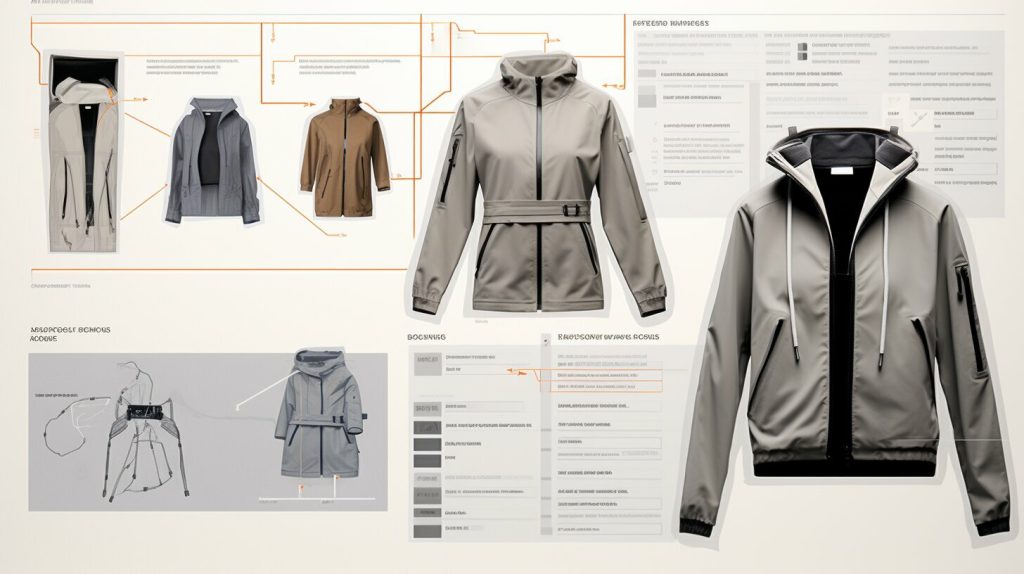
When organizing your tech pack, it’s important to consider the order in which the information is presented. Start with the most important information, such as the garment style and measurements, and then move on to the materials and trim details. Use headings and subheadings to break up the information into manageable sections.
It may also be helpful to include a table of contents at the beginning of your tech pack to make it easy to navigate. This can also help ensure that no important information is overlooked.
In addition to organizing your tech pack, it’s important to structure it in a way that is easy to follow. Use clear and concise language to describe each component, and avoid using technical jargon that may be unfamiliar to others.
By creating a well-organized and structured tech pack, you can help ensure that your garment is produced accurately and efficiently. Whether you are creating tech packs for your own fashion line or working with a freelance fashion designer, a well-prepared tech pack is essential for successful product development.
Reviewing and Revising Your Tech Pack
When it comes to creating a tech pack, reviewing and revising it before finalizing is crucial for effective product development. Not only does it help avoid errors and mistakes, but it also ensures that all necessary design details and specifications are accurately documented and communicated.
To begin, carefully review your tech pack for accuracy. Check all measurements, materials, trims, and other specifications to ensure that they are correct and up-to-date. If anything needs to be revised or updated, make the necessary changes and adjustments.
Next, review your tech pack for clarity. Make sure that all design details and information are presented in a clear and easy-to-understand manner. Use descriptive language and diagrams, if necessary, to help communicate your design intent effectively.
Finally, review your tech pack for completeness. Ensure that all necessary components are included, such as a detailed bill of materials (BOM) and a technical drawing or flat sketch of the garment.
After reviewing your tech pack, revise it as necessary. Double-check any changes or updates that were made and ensure that everything is accurate, clear, and complete. It’s also a good idea to have another set of eyes review your tech pack for a fresh perspective and any potential issues.
Remember, a well-prepared tech pack is crucial for successful product development in the fashion industry. Taking the time to review and revise your tech pack can help ensure its accuracy, clarity, and completeness, ultimately leading to smoother production and a successful final product.
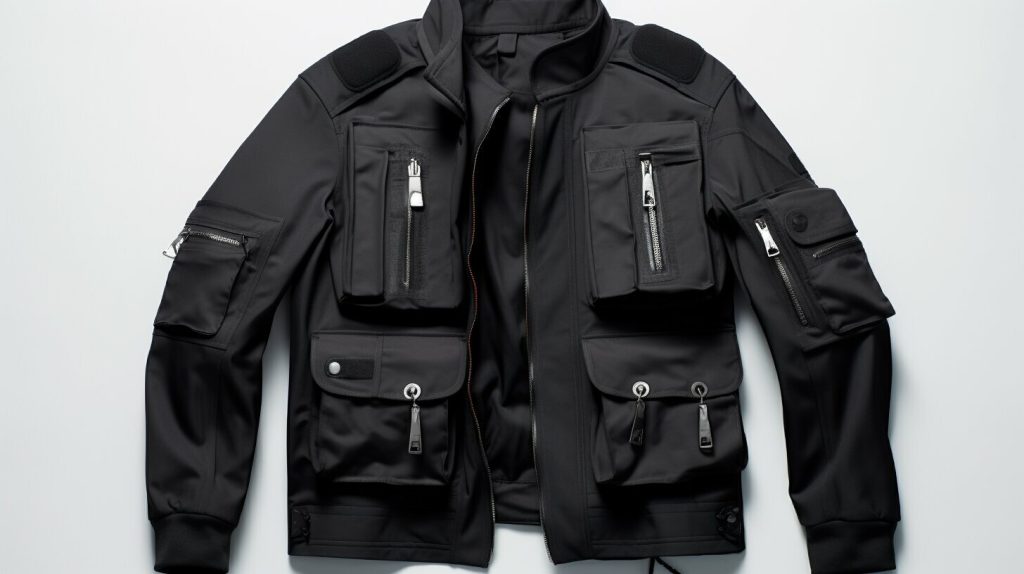
Communicating Your Tech Pack with Manufacturers
After creating your tech pack, the next crucial step is communicating it with the manufacturer. Effective communication is key to ensuring that the manufacturer understands your design intent and requirements, and thus, helps produce a high-quality final product. Here are some tips to help you communicate your tech pack with manufacturers:
- Send your tech pack in a clean, organized format that is easy to read and understand.
- Include a cover letter introducing yourself and your brand, providing any necessary background information that can help with the production process.
- Be available to answer any questions or clarifications that the manufacturer may have. Keep in mind that clear and open communication is essential to prevent mistakes or delays in production.
- Provide all the necessary information, including the tech pack itself and any additional information regarding your design intent, expectations, and requirements.
- Consider using tech pack software or apps that can help streamline the process and facilitate communication with manufacturers.
Remember, communicating your tech pack effectively with the manufacturer is a crucial step in the product development process. By following these tips, you can ensure that your tech pack is understood and executed successfully, resulting in a final product that meets your design standards and expectations.

FAQ
What is a tech pack?
A tech pack is a blueprint or set of specifications that includes all the necessary design details and information about a garment in the fashion industry.
Why is a tech pack important in the fashion industry?
A tech pack is important in the fashion industry as it serves as a guide for product development, ensuring that the final product meets the desired quality and design standards.
What are the key components of a tech pack?
The key components of a tech pack include garment specifications such as measurements, materials, trims, and colorways, as well as a flat sketch or technical drawing of the garment.
How can I collaborate with a freelance fashion designer to create my tech pack?
Collaborating with a freelance fashion designer can help ensure accuracy, attention to detail, and industry expertise in creating your tech pack. It is important to find and work with the right professional for your specific needs.
What is the importance of a technical drawing and flat sketch in a tech pack?
A technical drawing and flat sketch provide a clear understanding of the design details and help communicate the desired aesthetic and construction of the garment in a tech pack.
How do I create a detailed Bill of Materials (BOM) for my tech pack?
Creating a detailed BOM for your tech pack involves gathering accurate information on the required materials and trims for the garment, along with their specifications and quantities.
How should I organize and structure my tech pack?
Organizing and structuring your tech pack is important to ensure that all necessary information is easily accessible and understood. This can include using tech pack templates, creating a clear spec sheet, and following best practices for presenting design details and specifications.
Why is it important to review and revise your tech pack?
Reviewing and revising your tech pack before finalizing it for production is crucial to check for accuracy, clarity, and completeness, thus avoiding potential issues or delays during the manufacturing process.
How do I effectively communicate my tech pack with manufacturers?
Effective communication with manufacturers involves efficiently sharing your tech pack and addressing any questions or clarifications that may arise during the production process.
